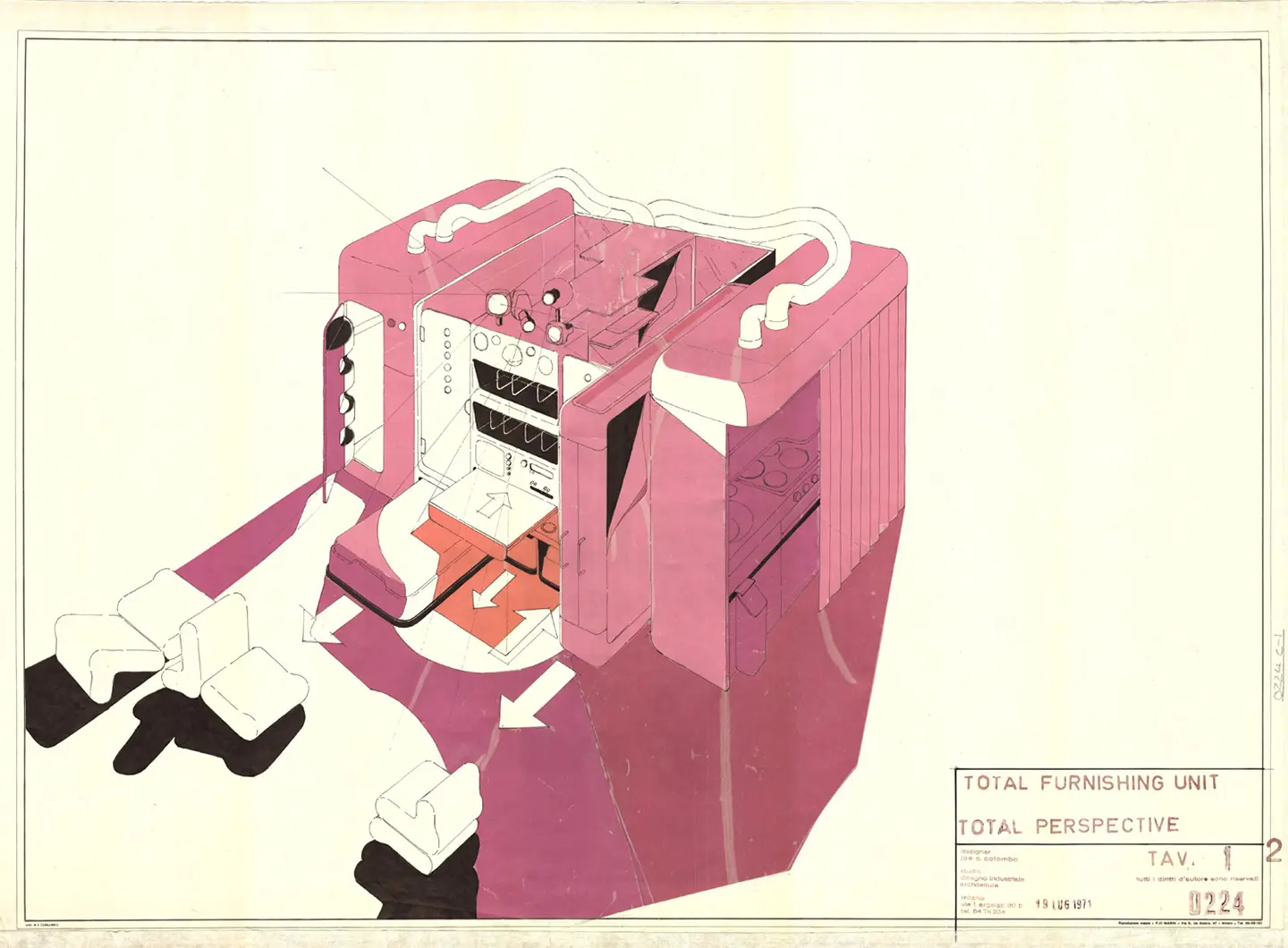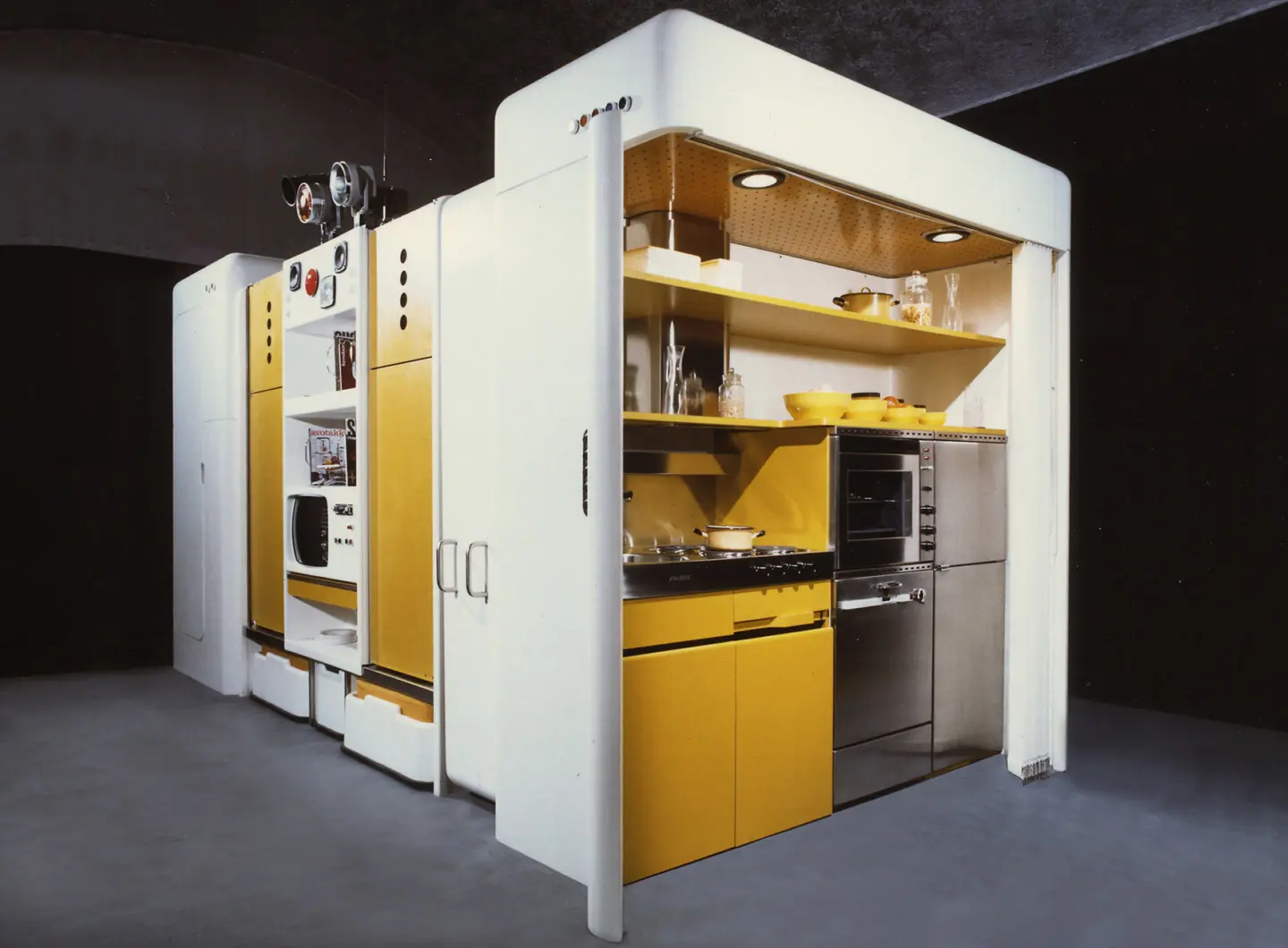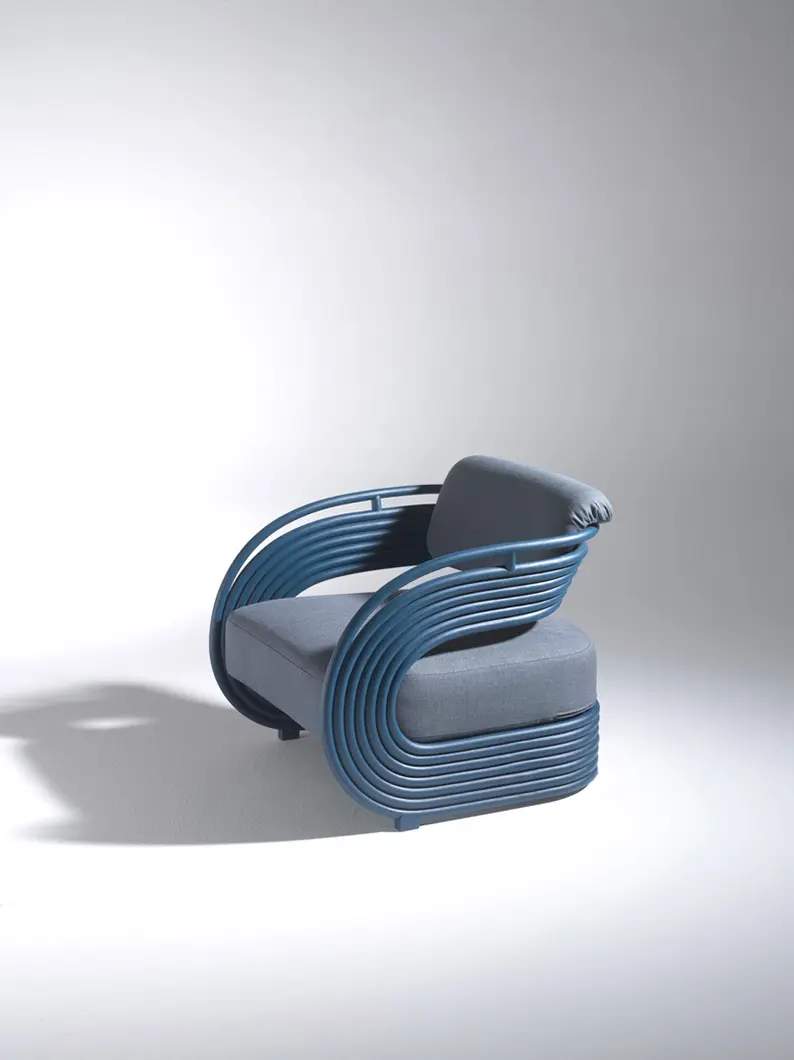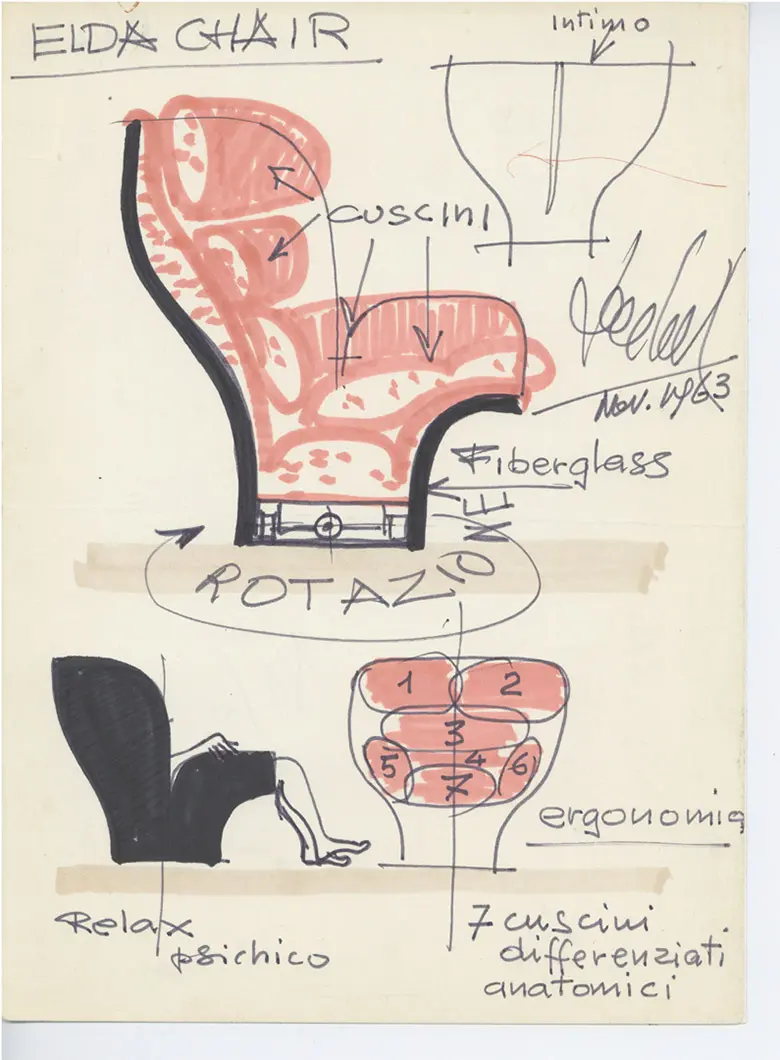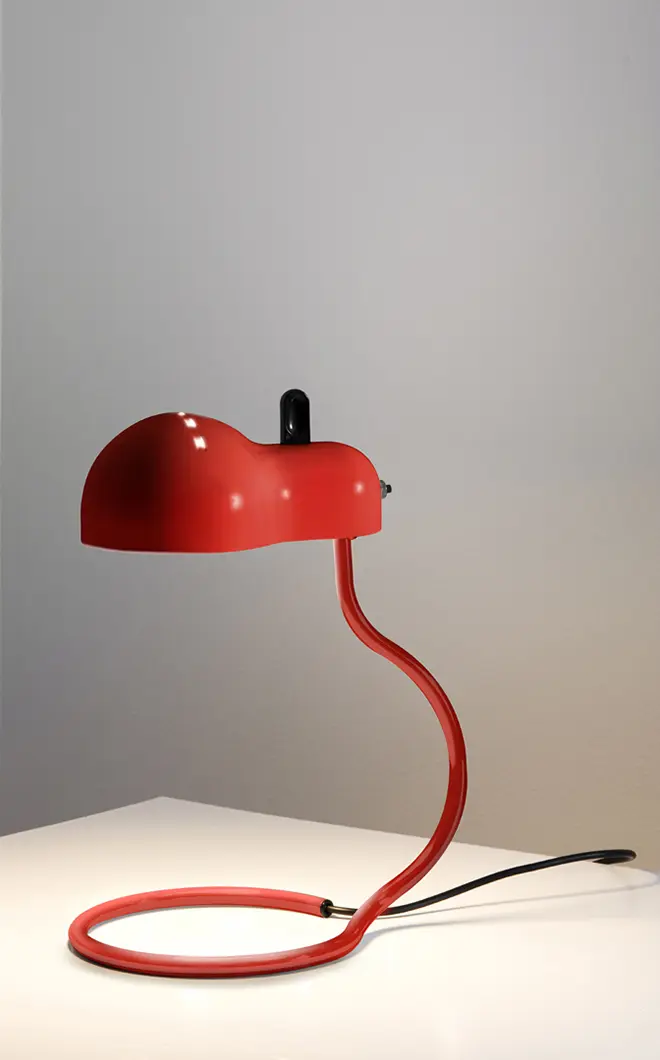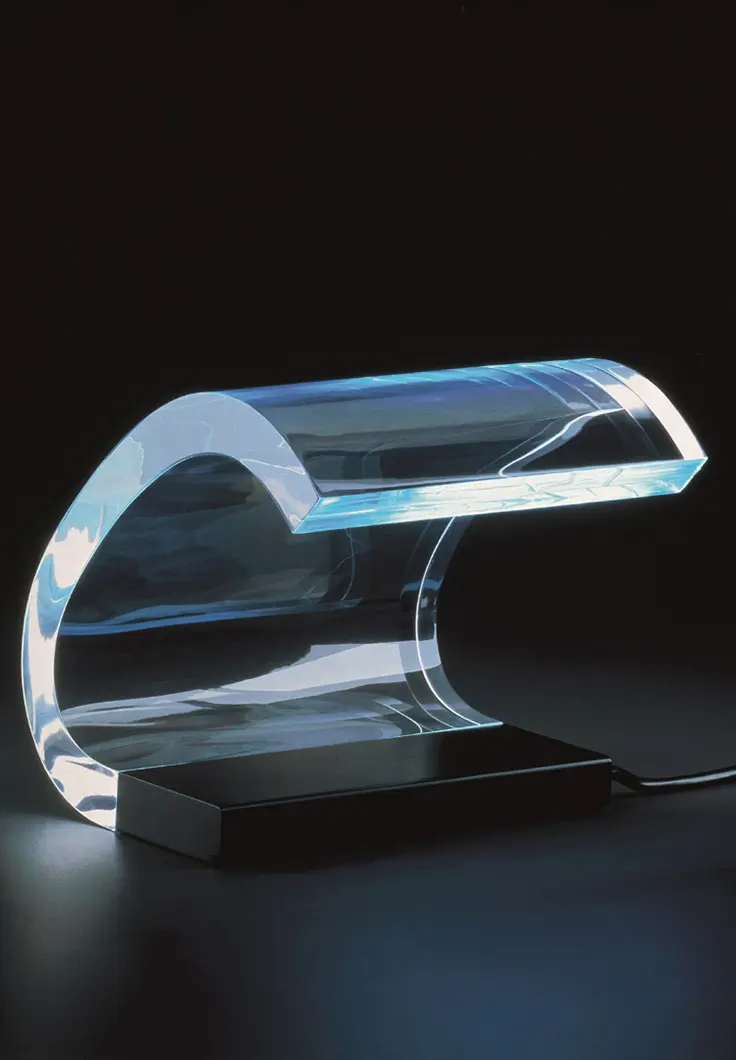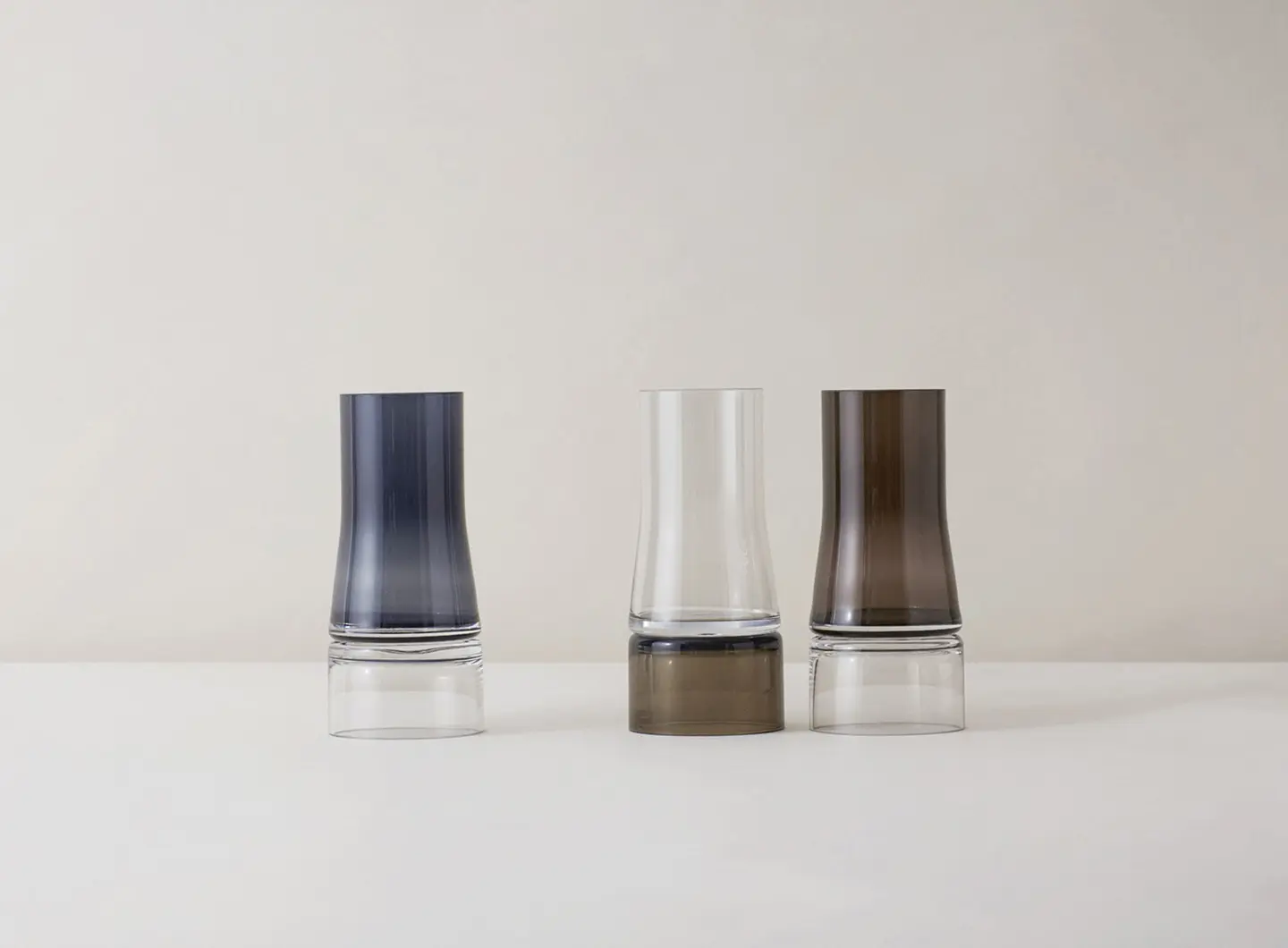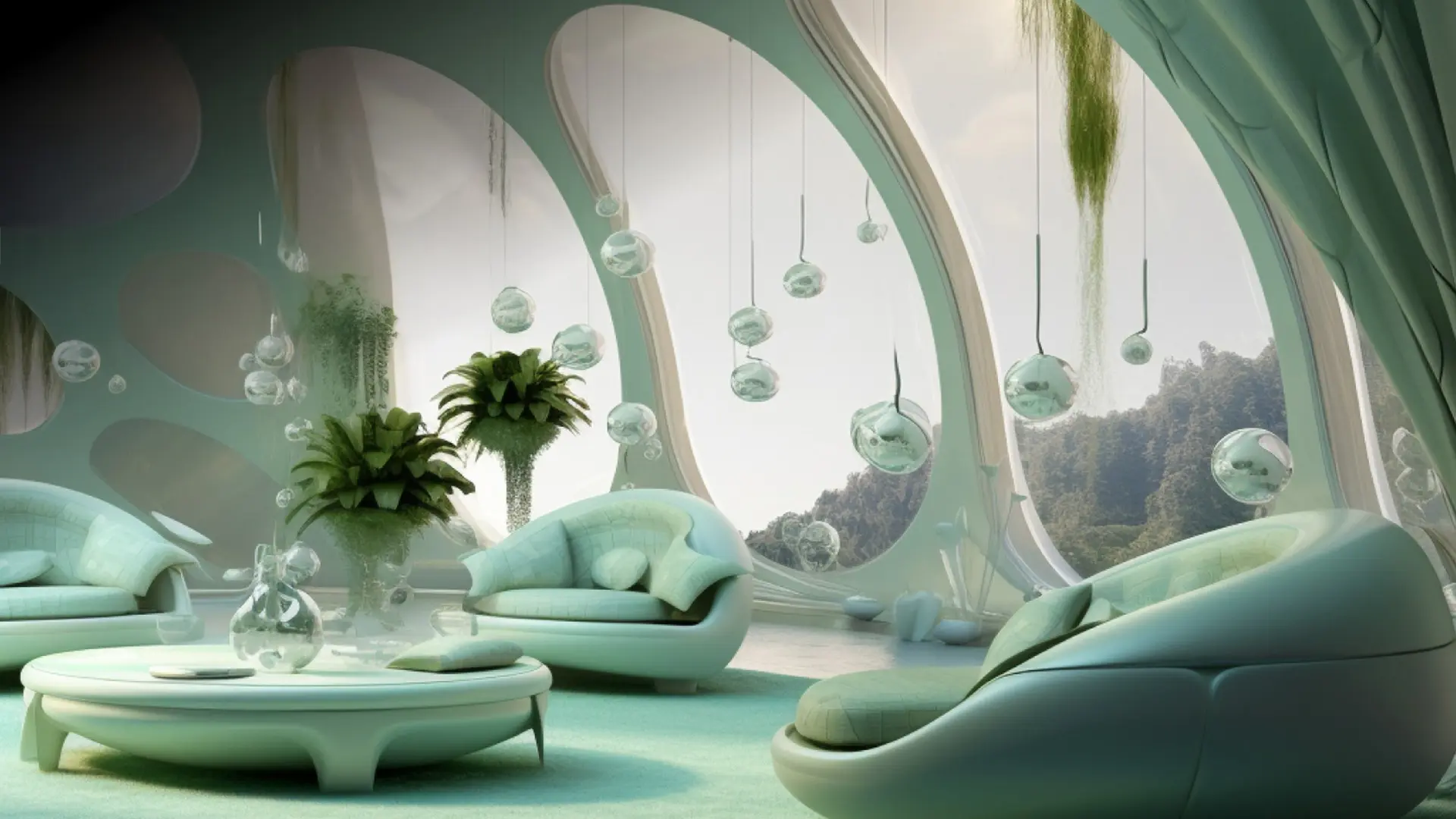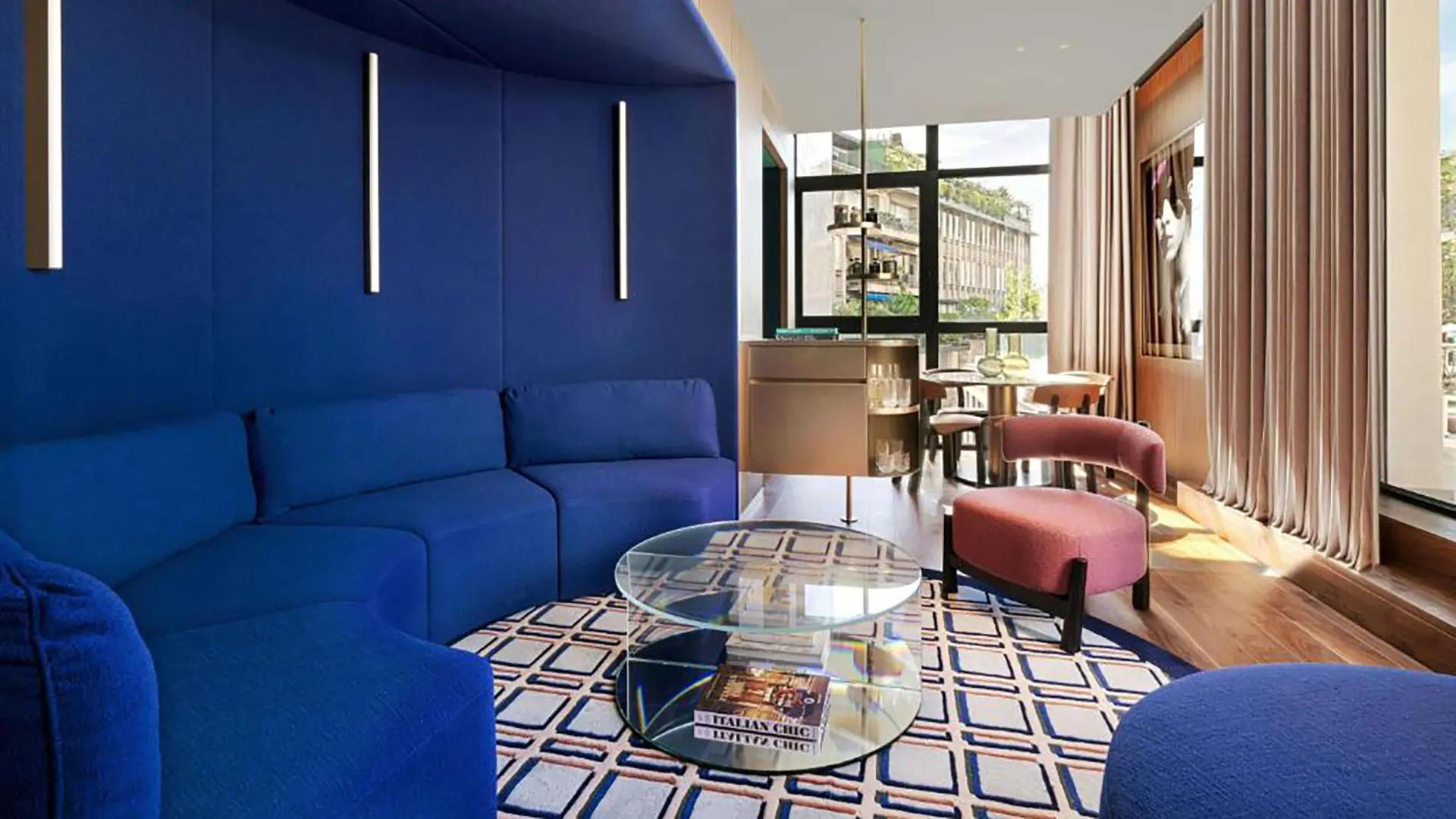A space devoted to an immersive experience where sport, culture, nature and design come together to express the essence of Italianness. During the XXV Olympic Winter Games, from 6 to 22 February 2026
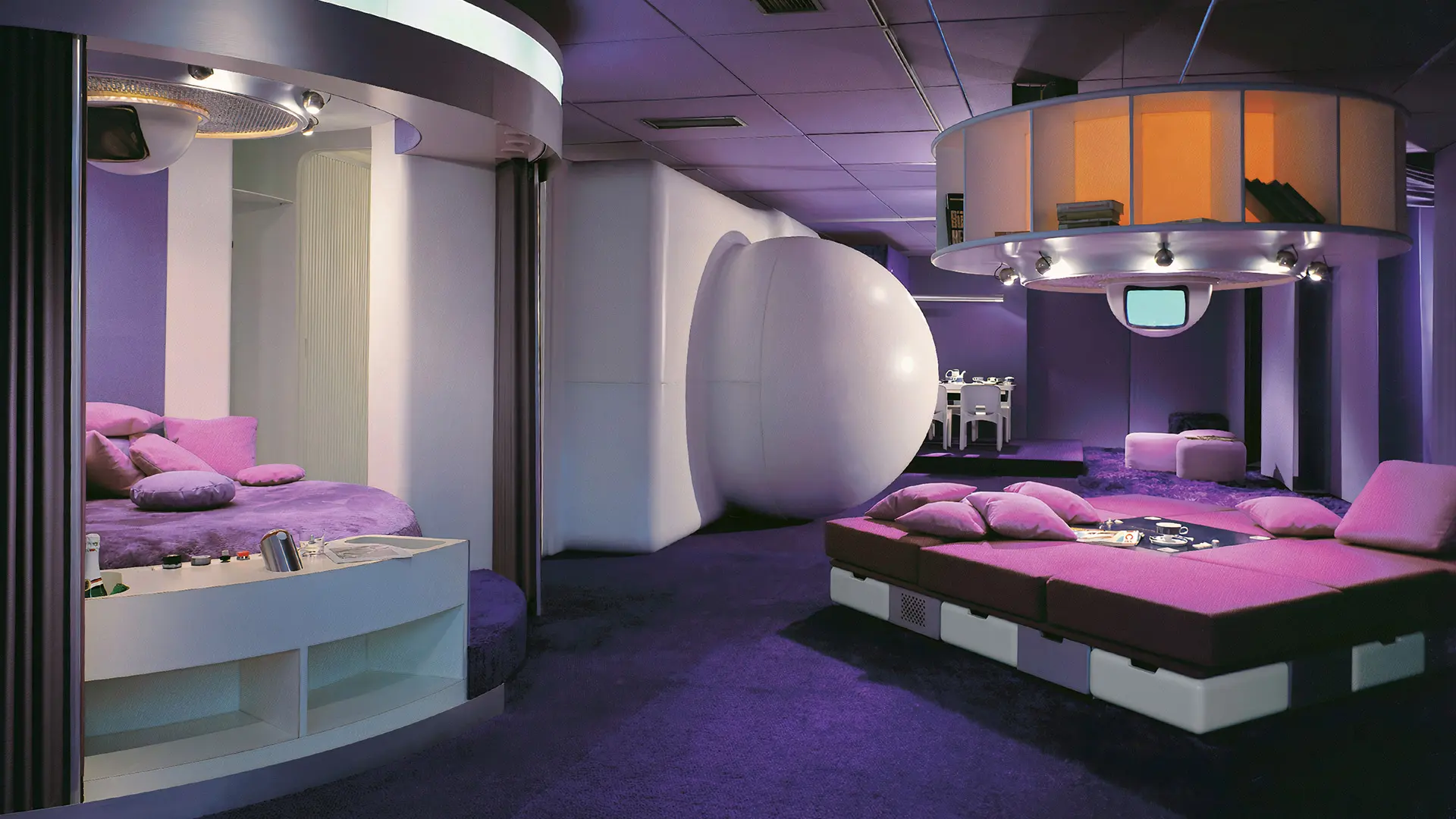
Visiona 1 experimental project (1969), created for Bayer at the international Interzum trade fair in Cologne and the Museum of Science and Technology in Milan.
In the catalogue just published by Silvana Editoriale, Ignazia Favata reconstructs the works and the personality of the renowned designer who predicted the future.
"He spoke very little and he sketched a lot," writes Ignazia Favata, Joe Colombo's apprentice, assistant and long-time colleague, in the catalogue raisonné, fresh from the press (February 2021), which brings together all the works designed, produced and created by the designer and his studio between 1962 and 2020. This is how, in a few simple words, she describes his inspiring personality, summing it up in a phrase with infinite expressive potential.
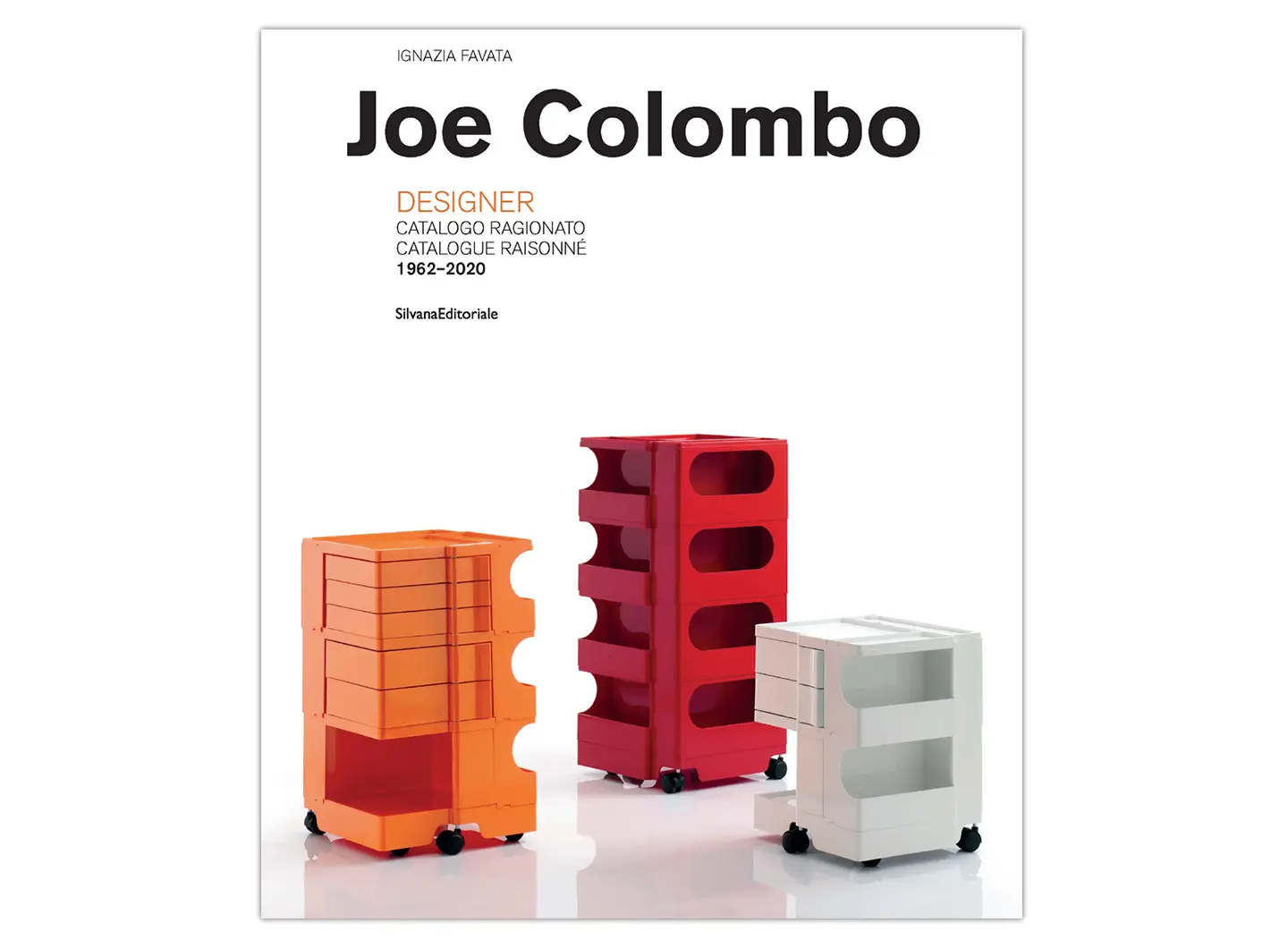
Book cover – Cover of the book Joe Colombo, Designer. Catalogue Raisonné 1962-2020, Silvana Editoriale
Joe Colombo, a legendary figure in 20th century design, who died on his birthday (30 July 1971) at the age of 41, was a multifaceted character whose cultural interests can be traced throughout his unique and futuristic work, so far removed from any academic mould. A musician and jazz lover, he played saxophone at the Santa Tecla Club in Milan when he was very young, and painted with Baj and Dangelo in the Movimento Nucleare. Passionate about mountains and skiing – so much so that he even became a ski instructor – Joe Colombo was one of the designers who brought about a radical revision of the discipline, with the introduction of new materials and new ways of thinking about living space.
The catalogue explores his work in full, but above all his character, recalled by the architect Favata in the kind of formal tones befitting an architecture textbook, while allowing her affection and esteem for Colombo to emerge between the lines. In the book, Colombo is described as "a kind of firework".
An avant-gardist in life and in his work, Colombo began experimenting with new plastic materials as early as 1959 when, after the death of his father Giuseppe, he inherited his father's electrical equipment company, and immediately afterwards began to reflect on how to reconcile his artistic and architectural training with the world of industry. He was the first to realise the potential of fibreglass, ABS, polyethylene, PVC and methacrylates in the field of design: his products, after an initial phase in which they pursued an "unconscious form", were conceived and "married" to the chosen material.
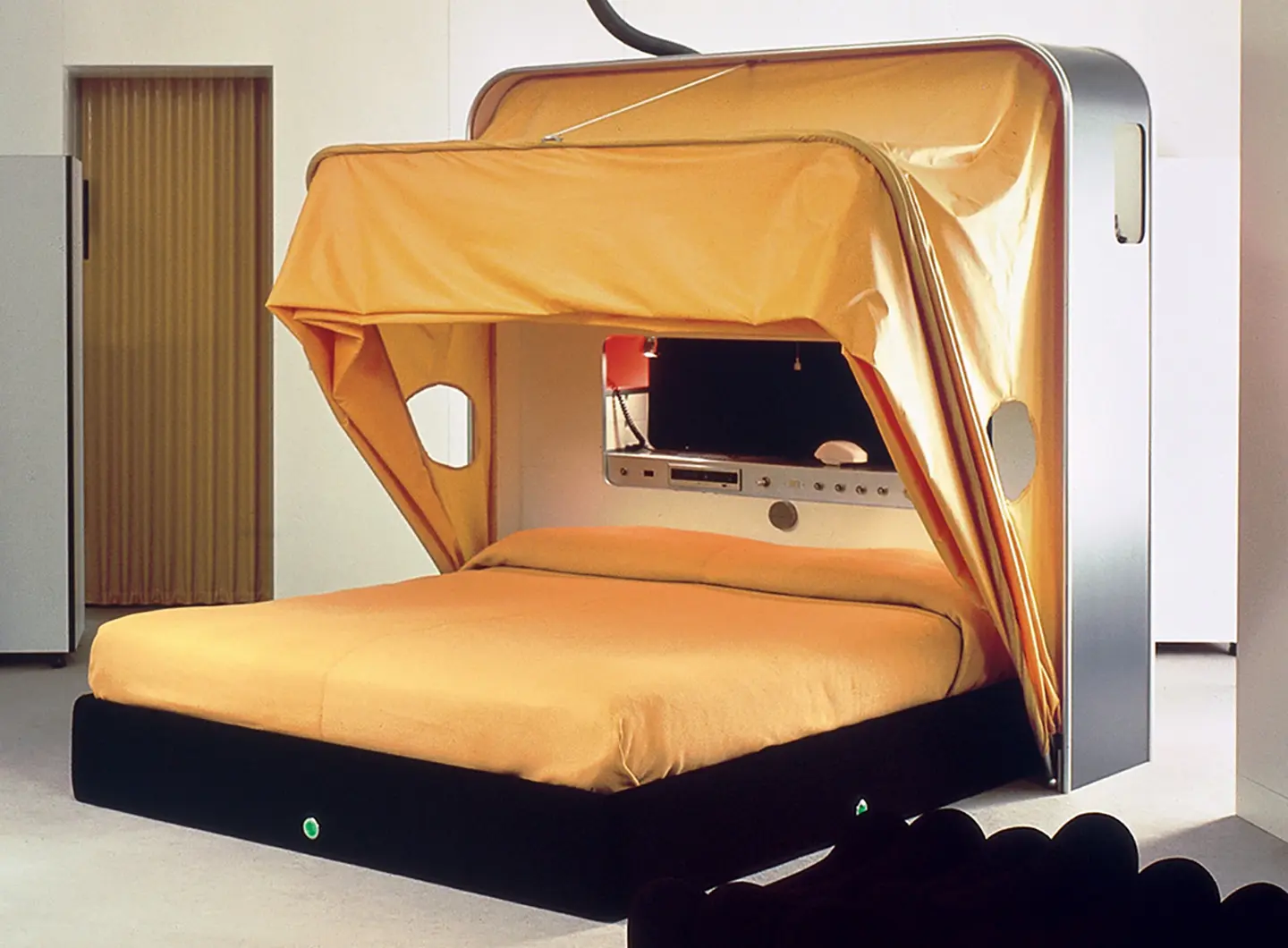
Cabriolet bed multifunctional monobloc (1969)
Each of his designs – from the object to the shop and stand fittings – had to correspond to four criteria: functionality, dynamism, transformation and mobility. Between 1963 and 1965, he added his love of mechanics to his search for form and function. As the author writes, one of the most significant prerogatives of Joe Colombo's design process was finding multiple solutions for the same problem. He would go to each client with several proposals to decide on subsequent refinements: "In essence, from design came design."
His method, which seemed to some to be pure improvisation, was, on the contrary, a very rapid synthesis of his formal, functional and technical know-how. Ignazia Favata writes: "He spoke by drawing [...] he drew on any surface, on the walls of the workshops, on furniture being fitted out and on the walls of construction sites."
The author brilliantly summarises and catalogues the design process and his entire production in three fundamental macro-groups: objects and devices; systems and series; multifunctional monoblocs. The detailed descriptions of each project are accompanied by photographic documentation, sketches and archive material from the studio.
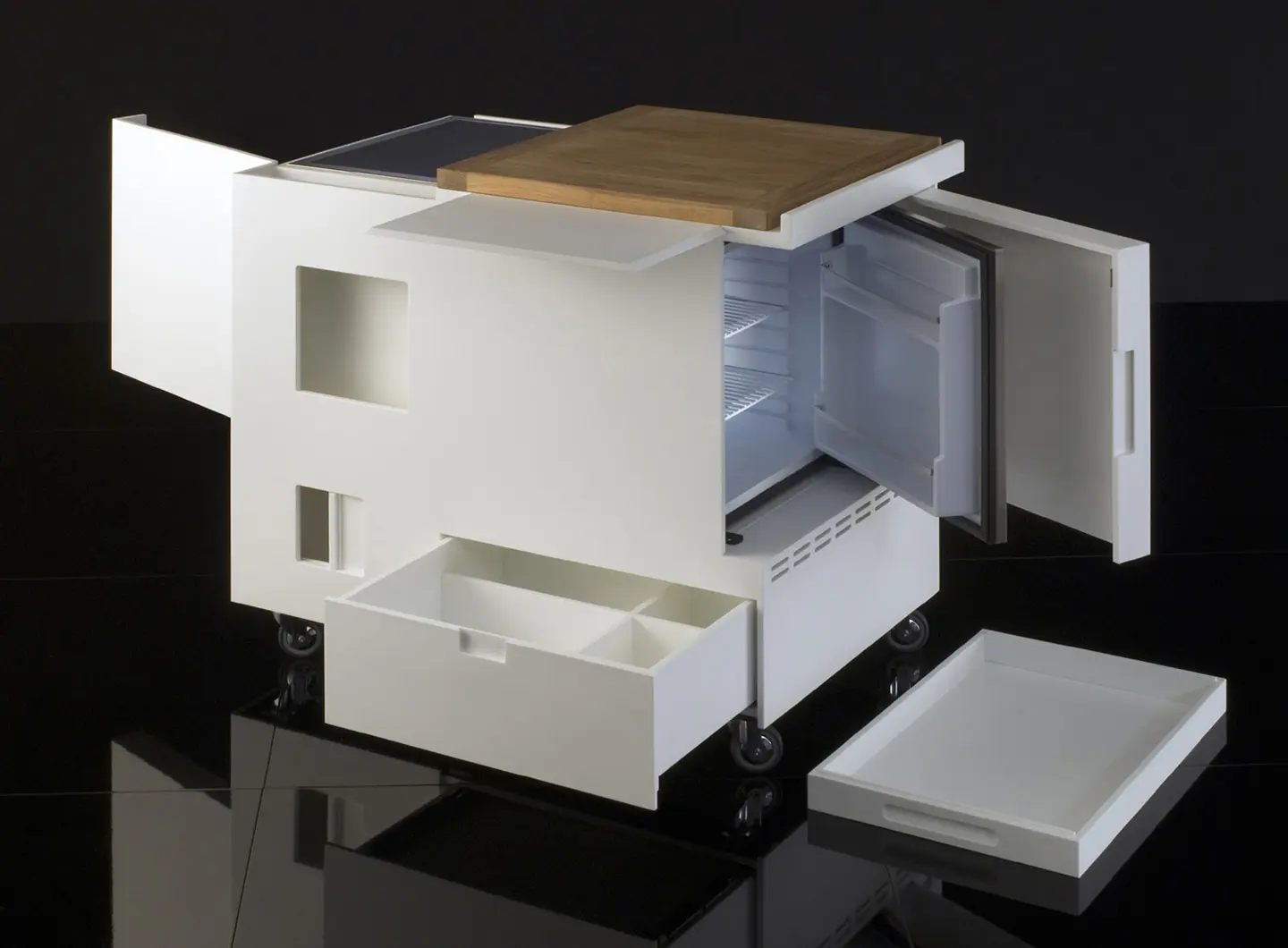
MINIKITCHEN (1963). Produced by Boffi
The "objects" category includes all the unique or mass-produced pieces designed by Joe Colombo, such as the Acrilica lamp (1962), his first design object created with his brother Gianni and obtained from the study of the application of methacrylate in the diffusion of light, and the Elda armchair (1963), created from the transformation of a fibreglass boat mould; but also the Minilamp, a 50-watt floor lamp and the Calice tower-lamp for street lighting produced by Pollice.
In "systems" we find the designs made up of modular elements that can be assembled in different ways according to requirements, such as the Combi Center, the Triangular Container System and Coordinated Furniture B, the Programmable Living System T14, exhibited at the XIV Triennale in Milan, and the Additional System armchair, as well as the System Chair, an extravagant system for the composition of armchairs, sofas and loungers.
Lastly, the famous functional "monoblocs", resulting from a process of radically reinterpreting the concept of the relationship between man and object, giving rise to a new way of living that envisaged the total dissociation of furnishings from the environment in which they were located. Thus, the Minikitchen became a machine for preparing food, the Totem for hallways was an object that functioned as a mirror, lamp, umbrella stand and much more; the Space Bed was surrounded by towers equipped with telephone, light, radio, ashtray and so on.
As Domitilla Dardi writes in the essay "Back to the Future" published in the catalogue: "His is not a search for the gute Form, but an exploration of the devices that make living spaces more functional."
Title: Joe Colombo Designer. Catalogue raisonné 1962-2020
Edited by: Ignazia Favata
Published by: SilvanaEditoriale
Published: 2021
Pages: 394
Language: Italian and English


 Stories
Stories
